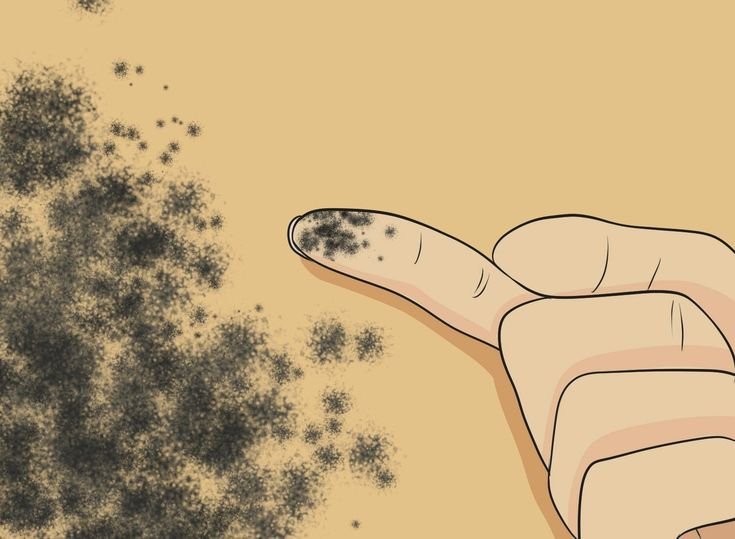Why Black Mold Removal is Vital for Your Home and Health

Black mold is not just an aesthetic problem—it’s a menace to your home’s integrity and your family’s health. Scientifically known as Stachybotrys chartarum, black mold thrives in damp, humid environments and can cause serious health complications if left untreated. Its presence often signals deeper issues within a home, such as water leaks or poor ventilation, making its removal a critical task.
This blog dives into everything you need to know about Black mold removal and why it’s necessary to act promptly. Explore the dangers of black mold, how it develops, effective removal methods, and steps to prevent its return. By the end, you’ll understand the key role professional services play in ensuring long-term results.
What Makes Black Mold Dangerous?
Health Hazards That Demand Attention
Black mold produces toxic spores that can contaminate the air you breathe. When inhaled, these spores release mycotoxins, which can lead to respiratory issues and other serious health conditions. Common symptoms include coughing, sneezing, itchy skin, nasal congestion, and difficulty breathing.
For people with asthma, allergies, or compromised immune systems, exposure to black mold can be particularly harmful. Babies, children, and the elderly are also at a higher risk of experiencing adverse effects. Extended exposure may lead to chronic fatigue, headaches, and even more severe neurological issues.
Damage to Building Structures
Beyond health concerns, black mold poses a major threat to your home’s structural integrity. It grows on materials with high cellulose content, such as drywall, wood, and carpets. Over time, these materials can weaken, rot, or even collapse, leading to costly home repairs.
Ignoring black mold doesn’t just ruin your walls; it can destroy your foundation and significantly devalue your property. Acting swiftly to remove it and address its root cause is essential for maintaining your home’s safety and value.
How Does Black Mold Form in the First Place?
Moisture, the Root Cause
Black mold thrives in damp and humid conditions. Leaks from pipes, roofs, or windows, combined with poor ventilation, create the ultimate breeding ground for mold. Bathrooms, kitchens, basements, and attics are especially vulnerable due to frequent exposure to water and limited airflow.
What makes black mold particularly tricky is its ability to hide. It often thrives in dark, unseen areas, like behind walls, under floorboards, or inside HVAC systems. Its presence often goes undetected until it spreads significantly.
Ideal Conditions for Growth
Mold requires three primary conditions to grow—moisture, warmth, and an organic food source. Unfortunately, homes in humid climates or regions prone to heavy rainfall are more susceptible to black mold outbreaks. Organic materials such as wood, paper, and fabric provide perfect surfaces for mold spores to colonize and expand quickly.
Regularly checking areas prone to moisture can minimize the risks of mold development. Identifying potential issues early is key to stopping mold before it starts.
Why DIY Black Mold Removal Falls Short
The Risk of Spreading Mold
Homeowners often try tackling black mold using household cleaning products like bleach. While bleach may remove surface stains, it doesn’t penetrate deeper layers where mold thrives. Scrubbing mold might also release spores into the air, inadvertently spreading the problem to other parts of your home.
Untrained attempts at mold removal can worsen indoor air quality, escalate health risks, and lead to an even bigger infestation.
Missing the Root Cause
DIY approaches often fail to address the underlying moisture issues responsible for black mold growth. Without identifying and resolving the root cause—like a hidden leak or high humidity levels—the mold will inevitably return. Investing in professional remediation ensures the problem is eradicated, both at the surface level and beneath it.
The Comprehensive Process of Professional Black Mold Removal
Step 1: Inspection and Assessment
The first step in black mold removal involves a thorough inspection. Professionals use specialized tools, such as moisture meters and infrared cameras, to detect the full extent of the infestation. They identify both visible and hidden mold colonies and locate any moisture problems that contribute to their growth.
This detailed assessment allows experts to create a customized plan tailored to your home.
Step 2: Containment
Preventing mold from spreading is a critical part of professional remediation. Mold removal specialists isolate contaminated areas using plastic barriers and employ negative air pressure systems to keep airborne spores from reaching unaffected zones.
By containing the affected areas, professionals ensure the safety of the rest of your home during the removal process.
Step 3: Safe Removal
Professional remediation involves more than just surface cleaning. Experts use industrial-grade HEPA vacuums, antimicrobial solutions, and air scrubbers to eliminate mold completely. Severely contaminated materials, like damaged drywall or carpets, may need to be removed and replaced to restore the property.
This step ensures that every trace of mold is eliminated, not just what’s visible to the eye.
Step 4: Moisture Control and Prevention
Once the mold is removed, professionals address the underlying causes of moisture. This might involve sealing leaks, enhancing ventilation systems, or installing dehumidifiers to regulate humidity levels. These preventative measures are critical for ensuring mold doesn’t return.
Tips to Prevent Black Mold in Your Home
Keep Indoor Humidity in Check
Monitoring and managing humidity levels in your home is one of the simplest ways to prevent mold growth. Invest in a dehumidifier to keep indoor humidity below 50%.
Use exhaust fans in moisture-heavy areas like bathrooms and kitchens, and consider opening windows to promote airflow.
Inspect Regularly for Water Damage
Regular maintenance can go a long way in stopping mold before it starts. Check for leaks in pipes, roofs, and windows regularly. Pay attention to water stains on ceilings or walls, as they often indicate hidden leaks. Properly insulate your home to prevent condensation from building up.
Improve Ventilation
Poor airflow is a common factor in mold development. Ensure your home is well-ventilated, especially in areas like basements, attics, and crawlspaces. If possible, install mechanical air systems to boost circulation in hard-to-reach spaces.
Why Professional Services Are the Best Solution
Expertise Matters
Black mold removal isn’t a task to tackle alone. Professionals have the tools, knowledge, and training necessary to eradicate mold safely and effectively. Their experience allows them to identify lingering mold and root causes that are often overlooked in DIY attempts.
Guaranteed Results
The value of hiring professionals lies not only in immediate results but also in long-term peace of mind. With the proper remediation and prevention steps, you can rest assured that black mold won’t return.
Trust experts in Black mold removal for reliable and lasting solutions. Their comprehensive approach ensures your home remains safe, healthy, and mold-free.
Taking Action
Black mold is a challenge that no homeowner should ignore. Left untreated, it can compromise your health, damage your home’s structure, and cost a small fortune in repairs. Recognizing the signs early and understanding the importance of professional remediation are the first steps toward a mold-free environment.
By following preventative measures and seeking professional help, you can eliminate black mold and restore peace of mind to your living space. Take action today to ensure a safe and healthy home for tomorrow!



